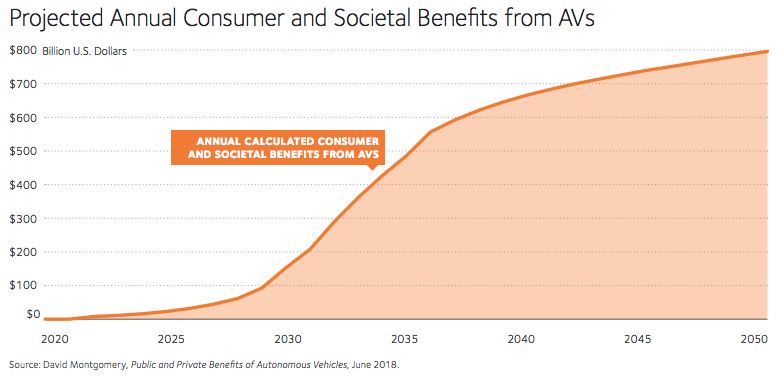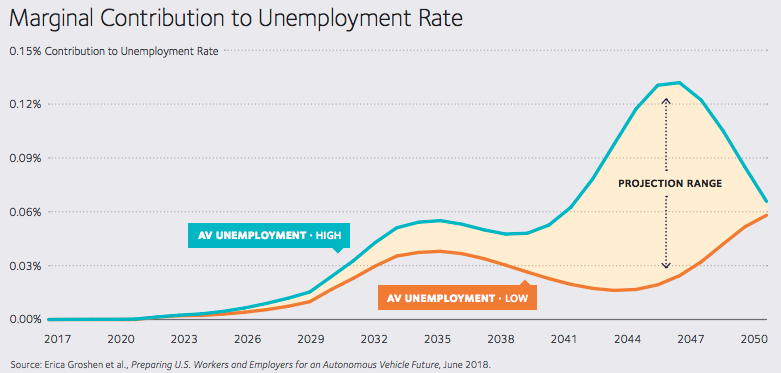June 13, 2018
The economic and social benefits of widespread deployment of automated vehicles (AVs) will far outweigh the costs in labor displacement and lost wages, according to new research commissioned by Securing America’s Future Energy (SAFE).
Their policy brief, “America’s Workforce and the Self-Driving Future: Realizing Productivity Gains and Spurring Economic Growth” (pdf available here), found that when measured in economic terms, the benefits offered by AVs in a single year of widespread deployment could be far greater than the total cost to workers over the next 35 years combined.
The authors’ modeling of several possible deployment scenarios found that widespread deployment could lead to nearly $800 billion in annual social and economic benefits by 2050, including by:
- Reducing the toll of vehicle crashes (The model assumed conservatively that AVs would only address crashes resulting from a “gross driver error,” such as distraction, alcohol, or speeding);
- Giving productive time back to commuters, by reducing congestion through fewer crashes and reduced bottlenecking;
- Improving energy security by reducing U.S. dependence on oil and the resulting environmental externalities of a cleaner fuel supply;
- Improving access to retail and jobs: The report found that increased willingness of shoppers to travel as little as two additional minutes could increase a mall’s customer base by as much as 50 percent in some cases; and
- Improving access to large job markets for some economically depressed regions.

As for the costs, the report highlighted unemployment and wage losses. On unemployment, the report said the impact would be felt starting in the early 2030s and would increase the national unemployment rate by .06 to .13 percentage points at the “peak impact” in 2045-2050, before a return to full employment as worker skill requirements evolve and new jobs replace those eliminated by automation.

The report compared that peak impact to the Great Recession, which saw a peak impact of 4.9 percent in 2010, and to the recession of the early 2000s, which saw a peak impact of 1.3 percent in 2003.
On wage losses, SAFE’s scenarios found a range of projected wage losses reaching as high as $18 billion in 2044 and 2045. But as the report pointed out, those same years would see over $700 billion in projected benefits for each of those years.

The report cautioned that most labor impacts associated with automated vehicles would be tied to the adoption of high automation in trucking rather than automated cars, as there are far more professionally employed truck drivers than there are car drivers. Partial automation or tele-operation of trucks, however, would not likely have a significant negative impact on the workforce.
The authors suggested that the economic gains of widespread AV deployment could be used to invest in resources to help those affected by it (i.e. displaced workers). The report promoted a two-pronged strategy of pursuing the rapid deployment of AVs in order to maximize the benefits, while investing in workforce policies that mitigate the associated cost to workers.
The report’s policy recommendations included:
- Don’t focus labor market policy solely on AVs and their impacts, as they are just one of many challenges that will be faced by workers;
- Consider a broad range of policies, as workers in different regions will have different needs;
- Strengthen existing workforce development institutions, including American Job Centers and unemployment insurance;
- Continually evaluate policies and programs for impact and efficacy; and
- Identify areas for additional study, such as the productivity benefits from reduced driving times and the labor market impact of other implementation options for AVs.
Read the full report here.






